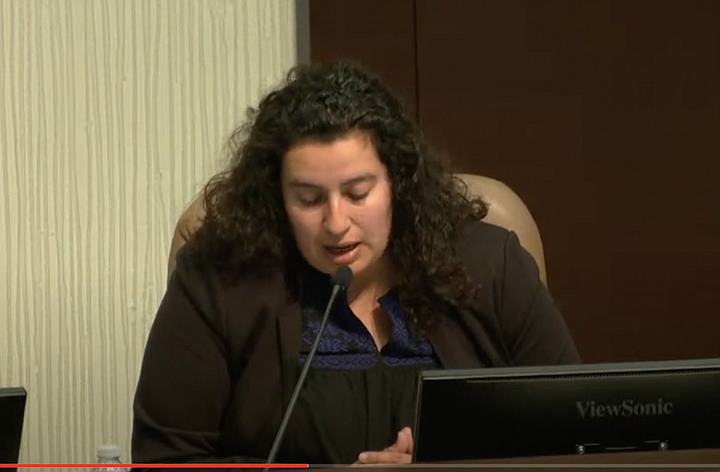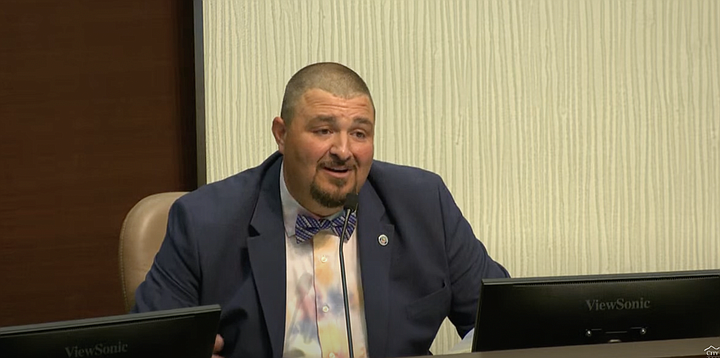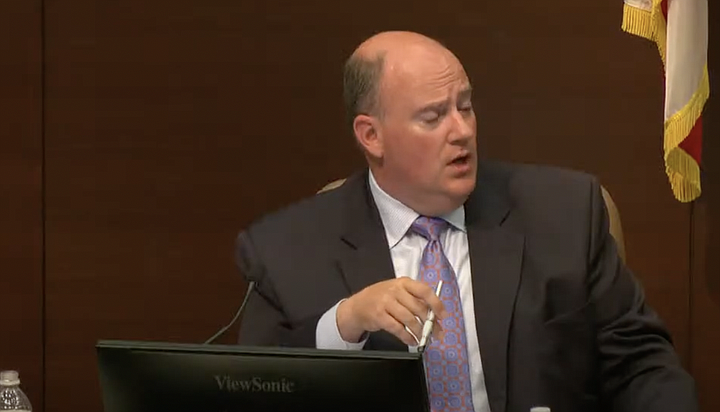”Who would want to spend the five or six million dollars it would take to get a grow site up and running?”
Cannabis is booming in Vista. Its 11 retail dispensaries have a corner on North County’s legal weed market, serving consumers from Oceanside, Carlsbad, San Marcos, Escondido, and Fallbrook. Since August of 2021, they haven’t needed a doctor’s note. Vista officials report its hometown dispensaries cause little crime, and bring in a half-million dollars each month in taxes.
The Vista city council is now leading this inland city of 100,000 nicknamed “America’s Climatic Wonderland” into its next phase as a marijuana mecca. At its June 28 meeting, its five-member city council began the process to license three greenhouses which would open in the Vista Business Park. There are currently no legal cultivators in Vista. These enclosed grow houses could range from 500 to 22,000 square feet, depending on what the grower requests.

Corinna Contreras maintains that Vista should start using “social equity” guidelines.
“They [Vista’s 11 dispensaries] would love to have a Vista-cultivated brand to sell in their establishments,” says Vista city councilmember Joe Green. “Similar to our breweries that all have local brews that they sell.”
Green says that adding regulated greenhouses to Vista’s cannabis portfolio could add another $1 million each year in taxed income to Vista’s coffers.

Vista councilmember Joe Green wants staff to decide social equity.
“Vista could end up being famous in the world for having its own Vista strain,” says councilmember Corinna Contreras.
A majority of Green’s city council colleagues agree that Vista should move into cultivation. But who gets the right to grow Vista homegrown was the center of a contentious city council debate last week.
Republican Green and his Democratic colleagues Contreras and Katie Melendez maintain that Vista should start using “social equity” guidelines to determine who should get these new cultivation licenses.

Deputy Mayor John Franklin will sue his own city over “racist” social equity.
The social equity concept as it has been used gives special consideration to members of certain racial groups, veterans, women, disabled, or those with prior drug convictions. Members of these groups get preferential consideration when the city decides who gets these new licenses.
“Entire communities were pulled apart by the war on drugs,” says Melendez. “I want to ensure that communities in Vista have the same opportunities of the commercialization of a sacred plant.”
Deputy Mayor John Franklin, a Republican, implored Green, Contreras, and Melendez to spell out who exactly would benefit from Vista’s new social equity equation. Vista’s 11 retail licenses were awarded three years ago without any social equity considerations.
The three declined, saying that Vista city manager Patrick Johnson and his staff should define which groups get this special social equity consideration for these new cultivation licenses.
Franklin was not having it. Noting that council member Contreras mentioned African American and Latinos, he wondered if Asians, Samoan Americans, or native Americans would get shut out at the expense of the other two minorities she mentioned.
“I’m 128th Choctaw,” says Franklin. “Does that qualify me? I thought we were done with government-sanctioned race discrimination in America. I believe treating people differently because of the color of their skin is morally outrageous, and it’s unconstitutional.”
Franklin says including race in Vista’s new social equity standard connected with the cultivation licensing will exclude one or more groups based on skin color. He says he is prepared to sue his own city if race is used in the new cultivation ordinance.
The social equity measure passed 3-2 with Franklin and Mayor Judy Ritter voting no. Franklin voted no. Not because he was against cultivation, but because of the social equity component.
Deputy Mayor Franklin says that the council majority dodged its decision making responsibility by letting the city manager and his staff decide how to write the social equity formula. He says it is important for the council to discuss such crucial issues as racial preference in a public meeting and not leave it up to city staff. “This is a potential explosive landmine,” says Franklin. “I just want my fellow councilmembers to stand up for what they believe and show it with a public vote.”
Franklin says the fact that Proposition 16 failed by 57 percent in 2020 shows Californians don’t want to use race for preferential treatment. Prop 16 would have allowed racial preference in college admissions.
Franklin says that the only way for the city manager to construct a social equity ordinance that would satisfy the Greene/Contreras/Melendez majority is that he would have to contact them individually to get their views. He says that would constitute serial meetings outside of the public view and that that is a violation of the Brown Act.
Green contended that it is best that city staff and not the council decide what social equity is. “I don’t want to debate for hours what the best protected class is.”
The new cultivation/social equity ordinance will come back for its second, final vote at the August 9 Vista city council meeting. That is when the social equity preferences will be outlined. City staff could say that social equity could apply to one, two or all three of the new cultivation licenses to be issued by the city.
Mike Mellano, owner/operator of the Coastal Wellness dispensary in Vista agrees with Franklin that race has no place in determining who gets a cultivation license. “There is no better definition of racism other than qualifying someone because of the color of their skin,” says Mellano.
Vista would be the first in the county to use social equity. Councilmember Green says social equity has been used by the cities of Long Beach, Bellflower, San Bernardino, Morro Bay, and Oxnard.
Councilmember Contreras says San Diego County and the city of San Diego, “…are looking at” social equity for its licensing. She says that Vista’s continued expansion of its cannabis industry is, “…making our community safer,” because it keeps drug cartels out of the picture.
Green calls himself a “moderate conservative” and says he does not see Vista as the latest California city to become a city hall run by a progressive majority. “I’m just a white guy from Illinois who married a Mexican woman. I look at what’s best for Vista. Partisanship is just not my thing.”
Franklin is running for the mayoral seat being vacated by Ritter. He included his concerns about social equity and its potential for racism in an email blast asking for donations.
Issuing cannabis cultivation licenses may be a moot point say some Vista retailers contacted for this article. They say that a current glut of “flower” or “product” coming in from growers from across the state would probably keep any potential growers from investing in a new grow facility. ”Who would want to spend the five or six million dollars it would take to get a grow site up and running?” asks Mellano. “I would not.” Mellano’s family has long grown produce in Oceanside under the Mellano & Company banner.
Any new Vista cannabis growhouse operator would have to pay $4,316 just to apply for the license. That grower would face a mandatory $19,967 in annual “regulation and inspection” fees. Each new cultivator would also have to pay $15.31 per square foot annually.
The new ordinance says that any new cannabis greenhouse would have to be at least 600 feet from a residence or a youth-oriented business, the same distance observed by its 11 retail stores.
Meanwhile, one Vista dispensary owner who declined to be named says not every dispensary is in the black. He says those that are connected with major chains like March & Ash, Stiiizy, Urban Leaf, Speedy Weedy and Tradecraft are making a profit, but that smaller, independent dispensaries are simply not profitable yet. He says that all Vista dispensaries have to pay one-third of their income in state, local and excise taxes. “In three years, I haven’t made a penny,” he says.

 The Best Legal Delta 9 Near You in Park Forest North
The Best Legal Delta 9 Near You in Park Forest North 
Be the first to comment